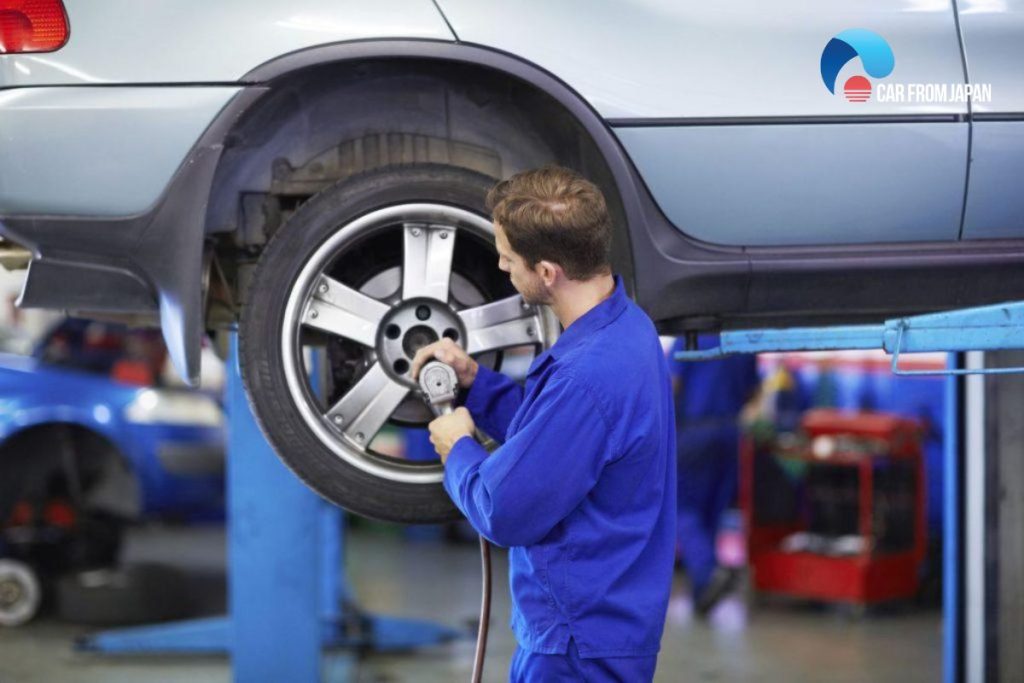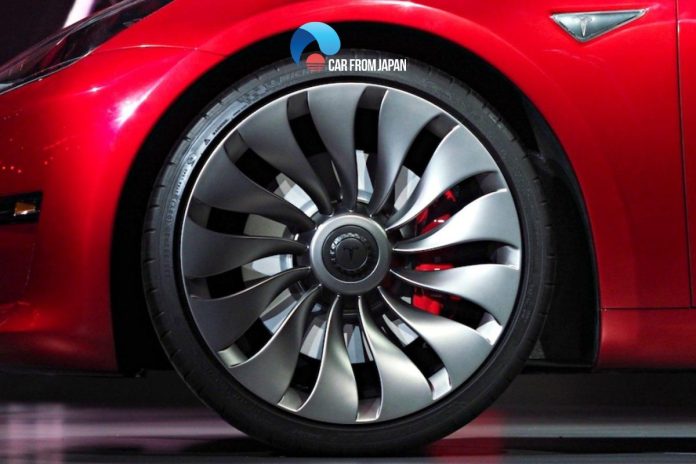Installing large-size wheels in the car has been the recent trend. Some people choose to put on bigger wheels during the winter season or for better driving in adverse weather conditions. While others prefer upsizing it for a sleek appearance or ground clearance.
However, do these wheels’ transformations give more advantages over their disadvantages? Let’s consider both the pros and cons of this action.
The Pros And Cons of Bigger Wheels On Cars
Many drivers believe that bigger tires have many outstanding advantages, improving the driving experience and the aesthetics of the car.
By learning about the advantages and disadvantages of installing a big tire, vehicle owners will have a comprehensive and objective view of this issue.
You should know that upsizing the car tires affects ample things with your ride. Therefore, here are the pros and cons of wheels plus sizing.
Advantages of bigger wheels
Improved grip and traction
Typically, the large and wide tires have more rubber on their track. This simply indicates that the car’s tires can make better contact with the road, thus offering better grip and traction. In other words, it allows better car handling.
However, you also should know that small tires can also provide good traction by generating more pressure per square inch and each type of tire has its own advantages.
Note: The bigger and thinner wheels offer more traction on snow.
Improved cornering
Another advantage of bigger rims is improving cornerning. Bigger car wheels result in more road contact, wider thread, and stiffer sidewalls.
And, with all these attributes, large-size wheels directly contribute to better cornering and handling.
Better braking
As discussed earlier, big rims on a car have more contact patches and grip on the road.
So, if you install large-size balanced tires (in simple words, not too hard or too soft tire) in cars, these will surely give a fair performance by reducing the braking distance.
Better appearance
Tires have a significant role in the overall design of the vehicle. For instance, replacing the old low-profile tires with bigger alloy wheels can give it more of a sporty look. Thus, upsizing the vehicle’s tire can add heaps of design benefits.

High ground clearance
For vehicles that often travel on rough terrain, the high ground clearance makes driving easier and more flexible.
Wheels and shock absorbers have a larger space to help absorb vibrations on uneven, rough roads, avoiding collisions between obstacles on the road and the chassis.
Therefore, many drivers who are adventurous, like to experience strong and conquer steep and rugged roads often choose wider rims to adjust the ground clearance to suit the terrain.
Watch the video from Fitment Industries to know whether are bigger wheels better!
Disadvantages of bigger wheels
Increased fuel consumption
Bigger wheels have more weight, which results in the engine working harder than usual. As a result, the fuel consumption also increases.
Besides, the less friction the vehicle has with the road surface, the less fuel consumption. Wide tires create more friction than small tires. Therefore, bigger tires can reduce the vehicle’s fuel economy.
On the contrary, the engine producing more horsepower will not be affected. In simple words, a powerful engine will have a negligible impact on fuel efficiency. However, the use of such a powerful engine is not economical.
Hard steering and slow acceleration
The disadvantage of bigger tires is that it increases the weight of the vehicle. This causes the car’s acceleration to decrease.
With a large contact area, wide tires not only reduce acceleration but also make it difficult for the driver.
Big tires take longer to steer or return to balance after each emergency turn. As the large size tires simply mean more weight, resulting in hard turning (steering), slow acceleration, and poor car handling.
Quick tire wear
Due to the heavy steering, wheel scraping, and lower sidewalls, the large-size tires wear out faster than expected.
Read More: How to Check Wheels Age Through Tread Block
Error in speedometer
A car’s technology is calibrated according to the standard components or parts installed in it. However, during the enhancement of car components, this embedded technology may not respond accurately.
For instance, the car wheels upgrading from 16 inches to 19 inches will give an error in the speedometer reading.
Safety system warning
Likewise, the electronic safety aids in the car, such as EBD, ABS, and traction control, may also not respond accurately and timely.
In addition, in cars equipped with a bigger tire, the brake system will have to work harder, causing the brakes to wear out faster and you will need to replace the brake system more often. And compared to normal tires, it will cost you more money for installing a bigger tire.

FAQs on Bigger Wheels In Cars
Can upgrading to bigger wheels damage the suspension over time?
Yes. Heavier wheels increase unsprung mass, which can wear out suspension components like shocks, struts, and bushings more quickly, especially on rough roads.
Do bigger wheels affect your speedometer reading?
Definitely. Changing wheel diameter without adjusting the tire aspect ratio can throw off speedometer calibration and odometer accuracy, unless recalibrated.
Can bigger wheels lower your car’s resale value?
Possibly. Some buyers see oversized wheels as a red flag for aggressive driving or modifications. If the wheels aren’t OEM or affect comfort, resale may suffer.
Are there any benefits to big wheels in snow or rain?
Not many. Larger wheels with low-profile tires have less sidewall flex and typically worse performance in snow and heavy rain compared to standard-size wheels with taller tires.
What happen when the rear wheels bigger than front?
Larger rear wheels can improve traction and look sporty.
But if not done correctly, they can cause speedometer errors, ABS/traction control problems, handling imbalances, transmission strain, and increased wear on various components.
Final Thoughts
Summing up, bigger wheels and the overall size of a tire will affect not only the appearance but also the performance of your car.
Considering the advantages and disadvantages of big rim sizes to choose right type of tire.
For more insightful Car maintenance tips, follow Car From Japan today!




I just purchased a Lexus 2016 is300 f sport. It should’ve come with 18″ standard alloy wheels, but instead had in the !7″ wheels that a non f sport comes equipt with. I am not happy as I wanted the larger wheels for looks and performance. Do you have any input on if anything can be done? I bought the car from a lexus dealer 2 weeks ago and it’s precertified. Thank you
I am buying a used 2015 Jeep Wrangler Unlimited with 255/75R 17 BF Goodrich tires. I want slightly more ground clearance so I plan to switch to 285/70R 17. The new tires are about the same height (32.1 ” vs 32.7″). The current width is 10″ while the new tire is 11.2″. Will the 285/70R 17 make a noticeable effect on gas consumption, steering and slow acceleration ?
It will not noticeably affect your fuel consumption or steering, but your speedometer, will be reading 60mph when you’re actually going 65mph.